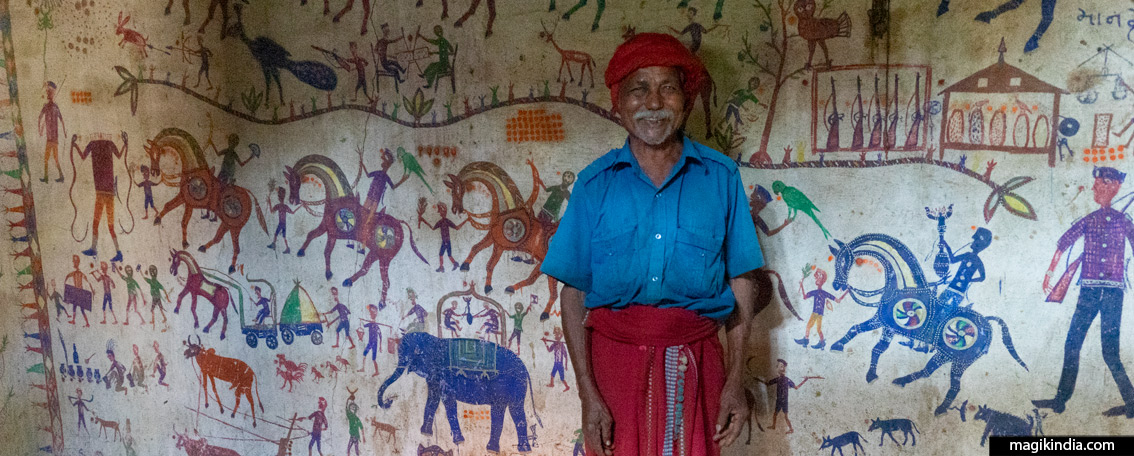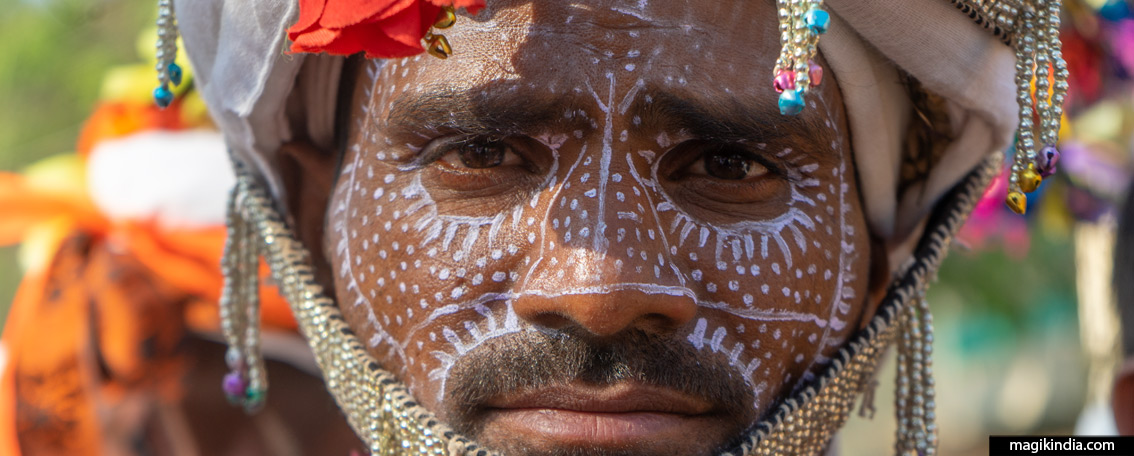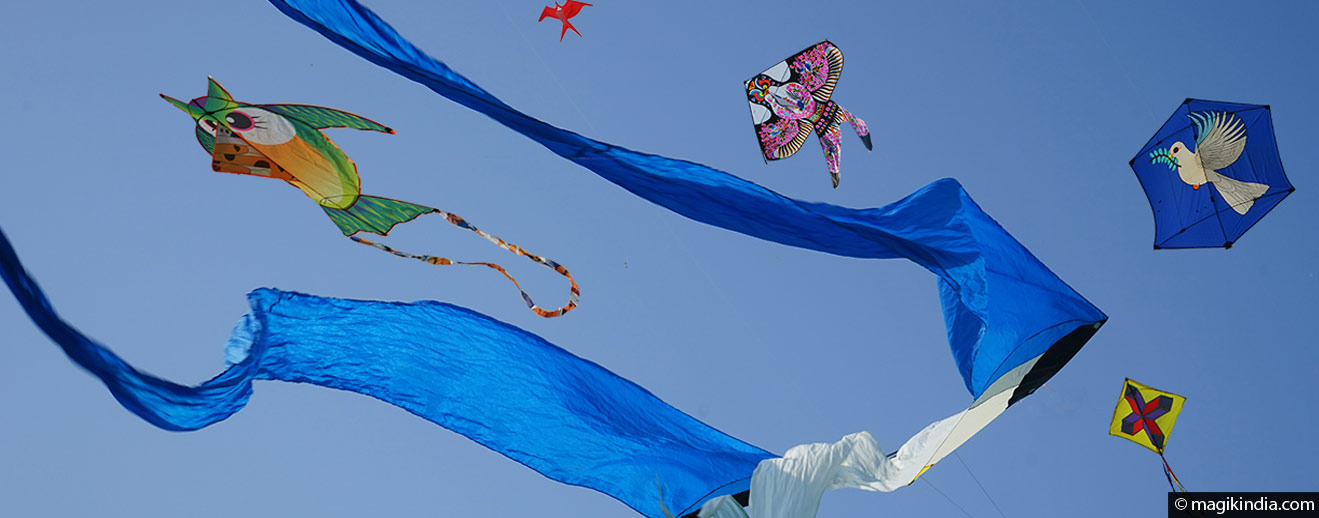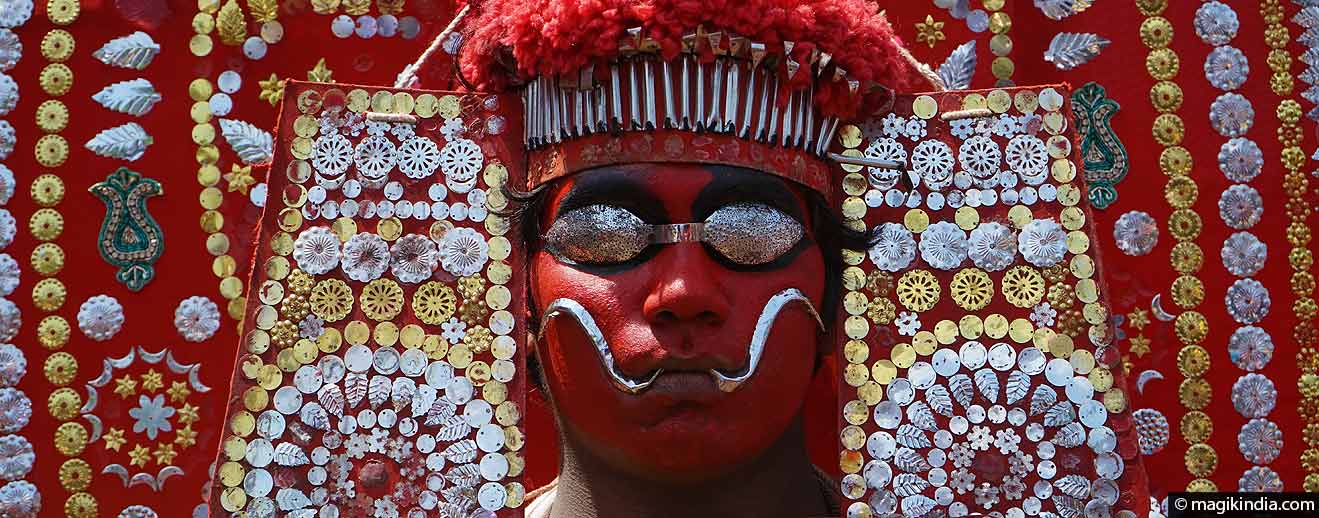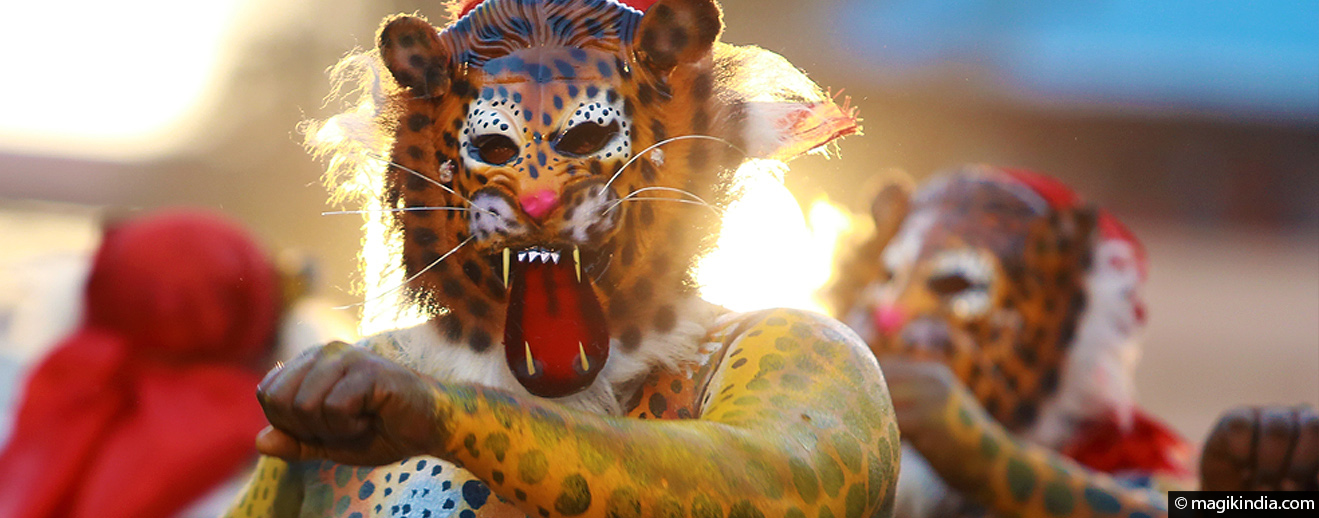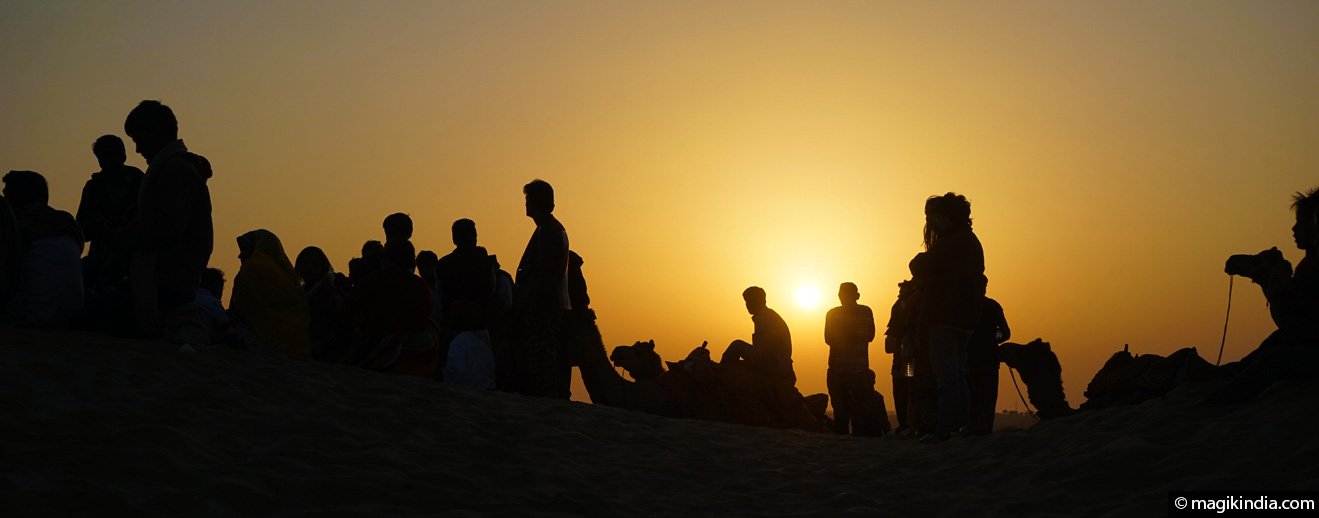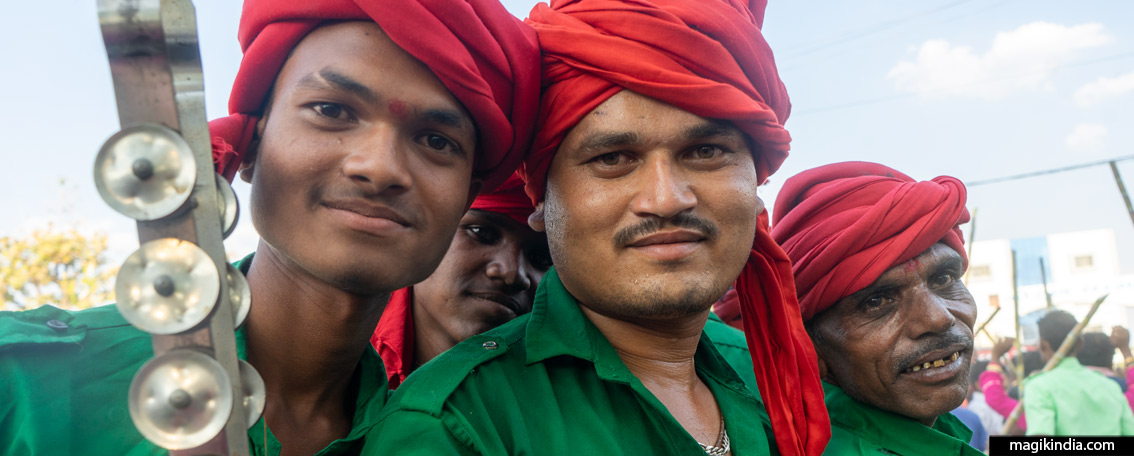
Holi in Rathwa Land
I often say several lives are necessary to know India. It constantly surprises us, piques our curiosity and rekindles our thirst for discovery at every moment. The Holi festival of the Rathwas, an adivasi community of Gujarat, is one of those wonderful surprises the Indian subcontinent has in store for us. Here, the arrival of spring is not greeted with coloured powders but with very special rituals, including fire walking and a wishing merry-go-round.
Holika
Holi, in Rathwa land, puts an end to the Bhagoria festival (see my previous report), which takes place for seven days and that is somehow an appetizer for the festivities that follow.
On the eve of Holi, as in much of North India, the Rathwas light the Holika bonfire. In the villages and in Chhota Udepur, a high pyre is erected made of dried branches and palm leaves. But, before setting fire to this great pyre, several rituals are carried out in front of another fire, smaller this one, placed near the animist sanctuary of the village.
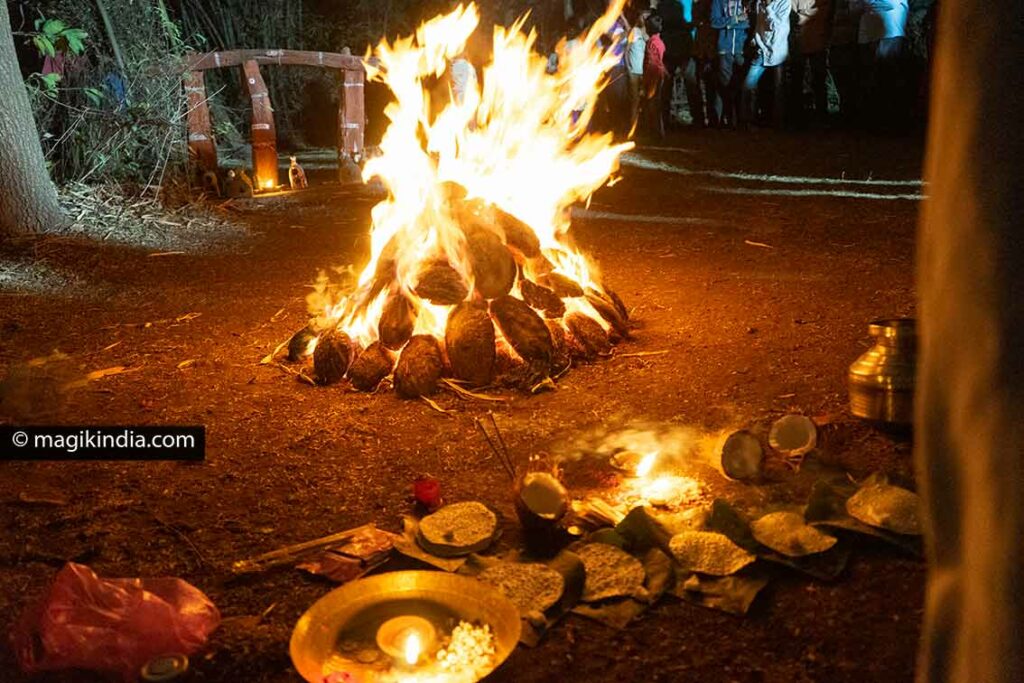
The sanctuary consists of several wooden pillars planted in the ground, at the feet of which are aligned terracotta animal figurines, most often horses.

The women of the village come each in turn to place offerings in front of this small fire: papadams, coconuts and wheat, all placed on large leaves.
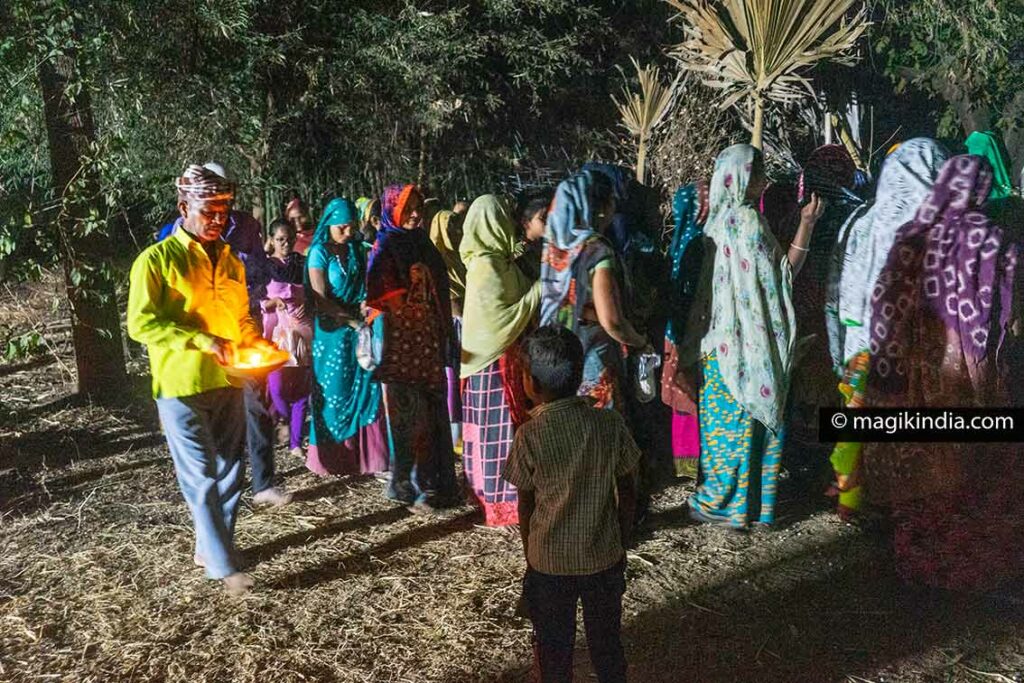
Once the rituals are over, the women and the Badwa (a sort of Shaman) come towards the pyre of Holika and go around it seven times while throwing popcorn. The fire is then lit by the Badwa.
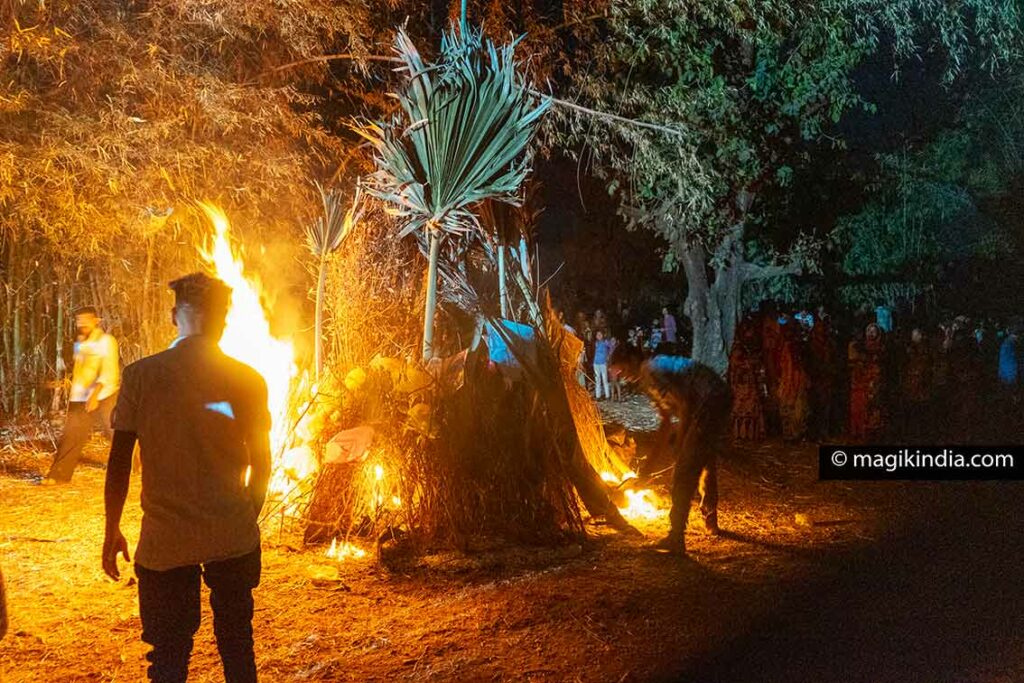
Holi with the Rathwa
On Holi day, other festivities take over.
In the villages, troupes of itinerant musicians go from house to house where they receive, in addition to a few rupees, in-kind donations such as cereals or cooking oil.
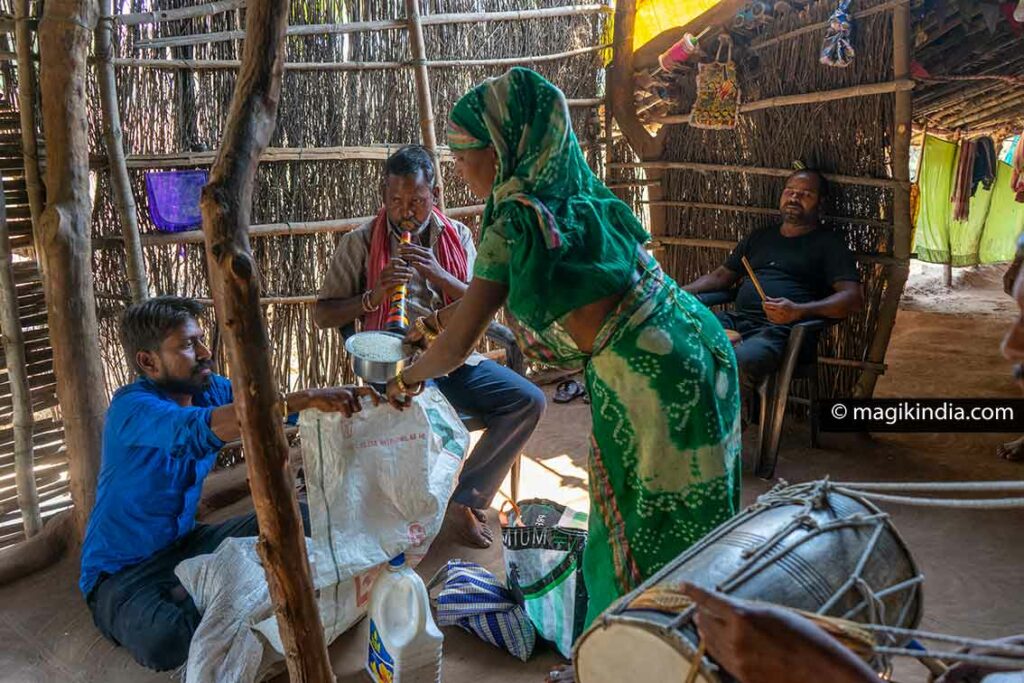
Sometimes villagers start dancing in front of their house accompanied by the bewitching sound of the Shehnai (a kind of oboe).

That same day, another tradition takes place. In Chhota Udepur and in the surrounding villages, a pit is dug in the earth where embers from the fire of Holika are deposited. Neem leaves are thrown over these embers to purify the air. In India, the leaves of the neem tree are used in traditional Ayurvedic medicine and it is supposed to ward off evil spirits.
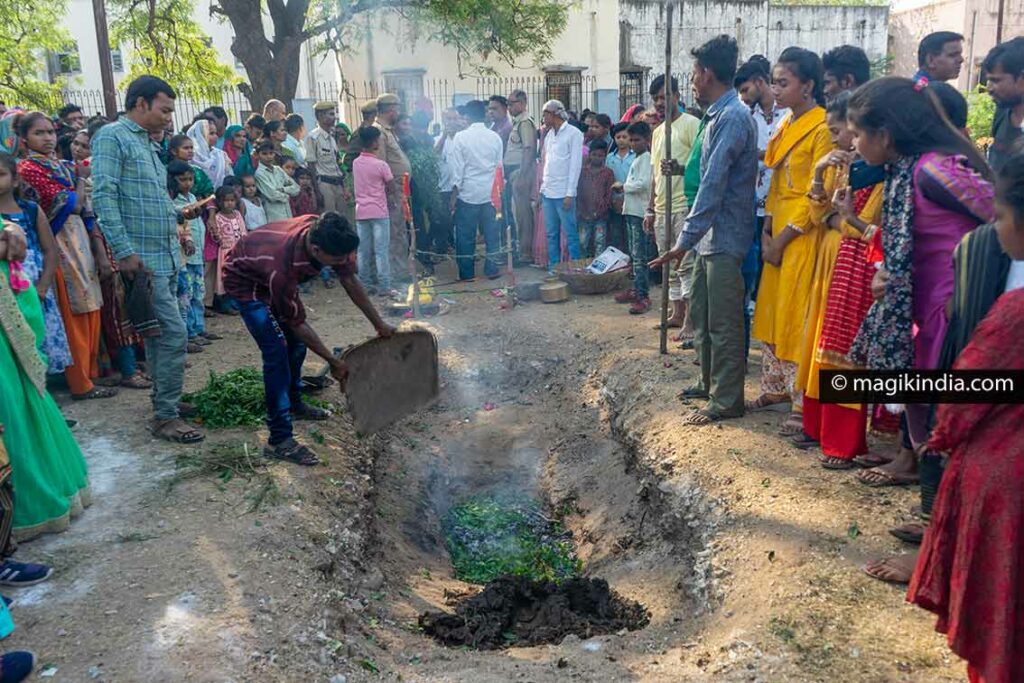
Before the firewalking begins, a troop of men and women circle the embers of the Holika fire and the pit performing the Timli, a rhythmic dance accompanied by percussion.
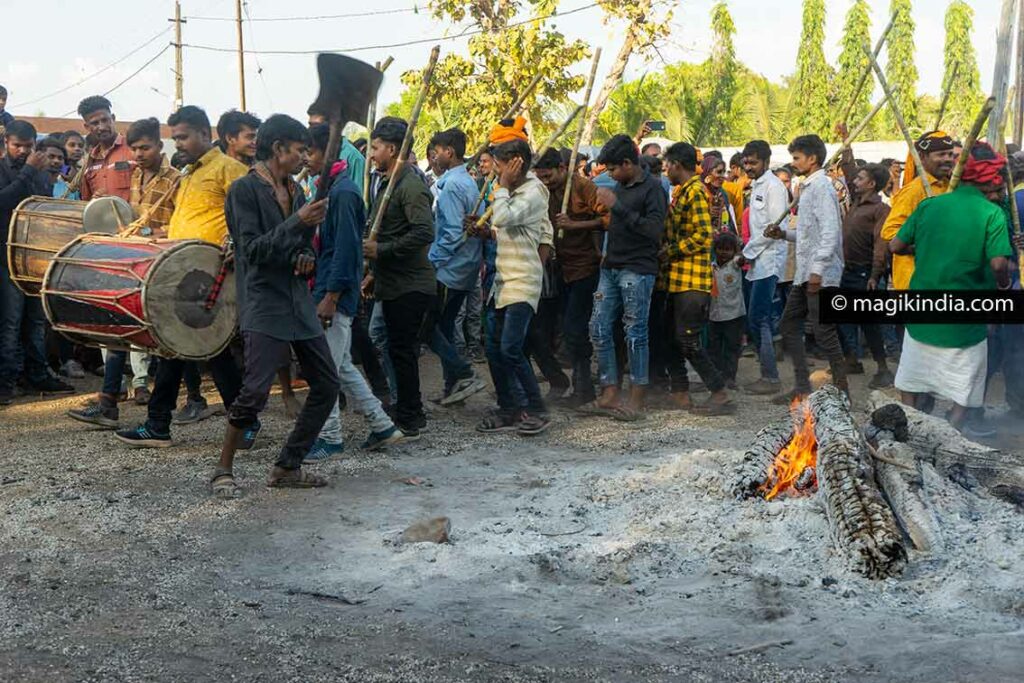
Some men wear their traditional Rathwa costume: white loincloth, green shirt and red turban. Others have dressed up as women, which adds a touch of madness to these festivities.
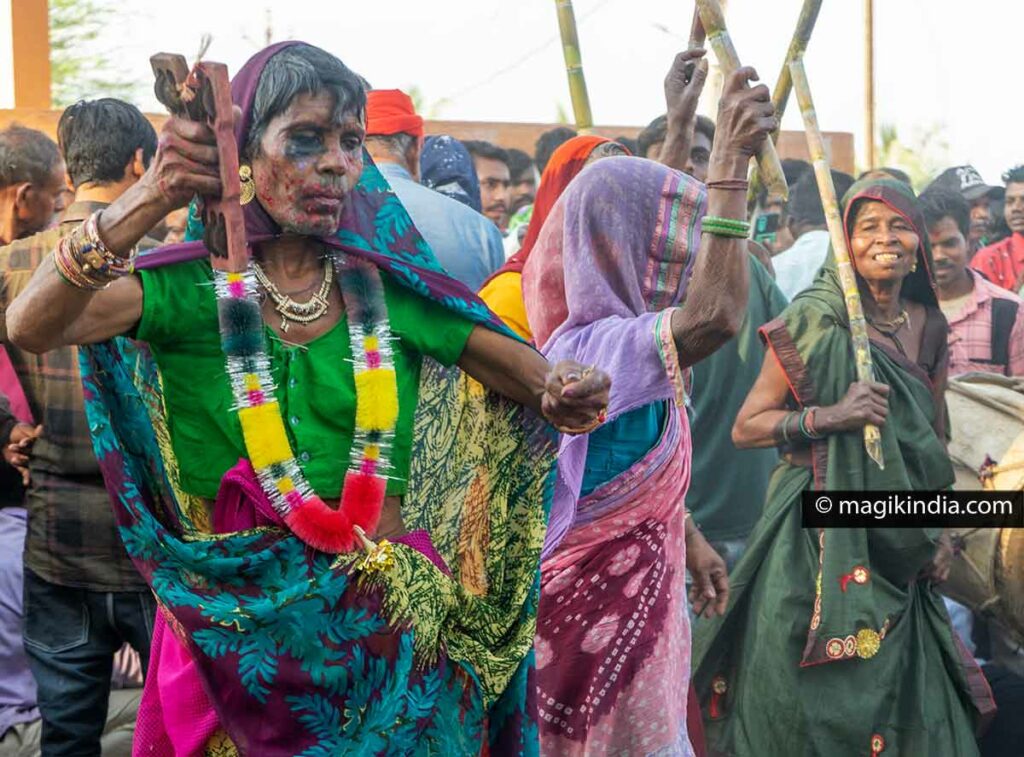

Then comes the moment of walking on fire. Men, whose faces are smeared with turmeric, make a few offerings in front of the pit, then throw themselves into it courageously, walk on the embers and come back up, refreshing their feet in the wet earth. Sometimes they hold a child in their arms that the parents entrust to them.
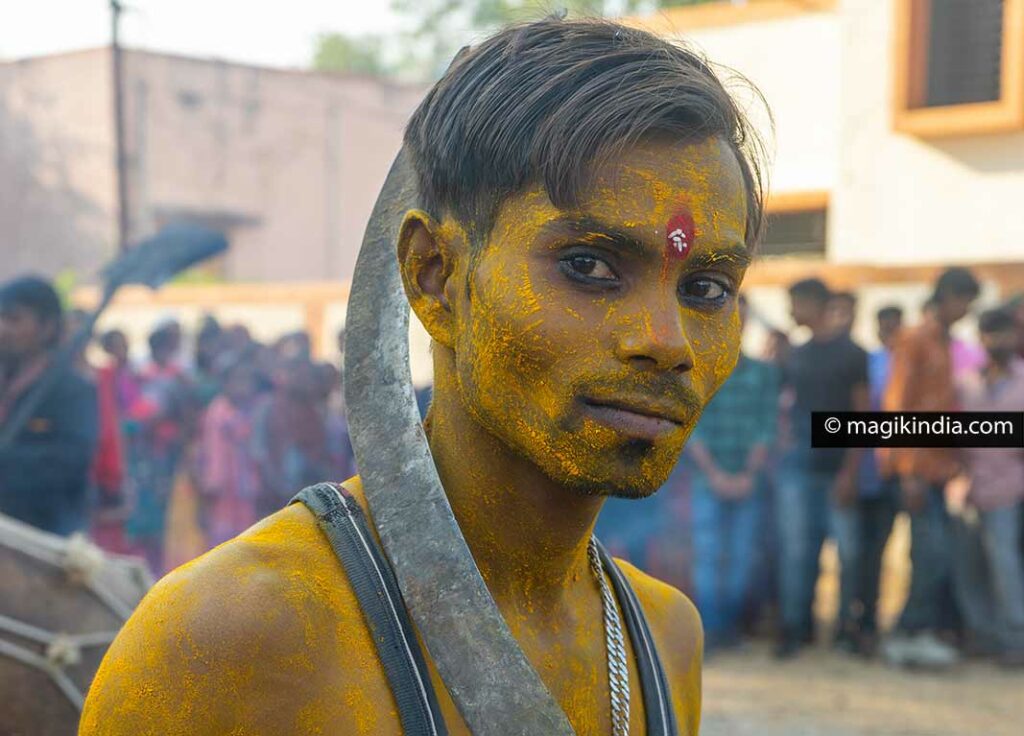
This firewalking invokes the spirits of nature and the Rathwa gods in order to make wishes come true or to cure certain illnesses.
The Gol fair and its wishing merry-go-round
The next day Holi has its share of surprises too. We are now in the village of Rumdia near Chhota Udepur for the Gol fair.
We follow the participants as they thread their way into the fields towards the central square of the village. The crowd is dense. There is a real explosion of sounds and colours.
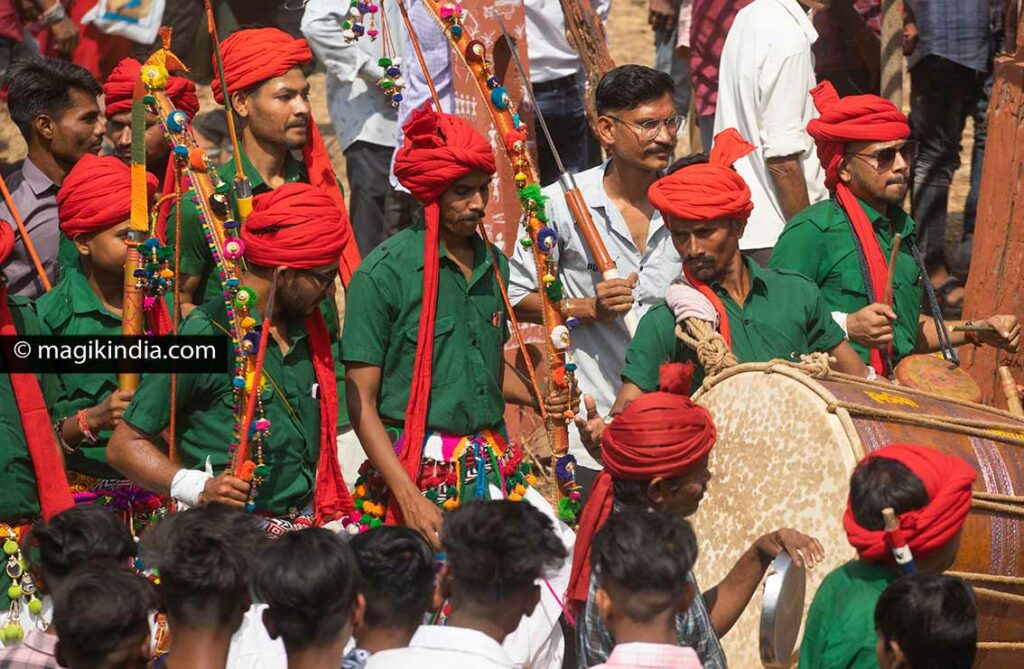
In the center of the square sits the “machado”, a sort of wooden merry-go-round.
For about an hour, a troupe of men and women in traditional costumes dance around this structure.
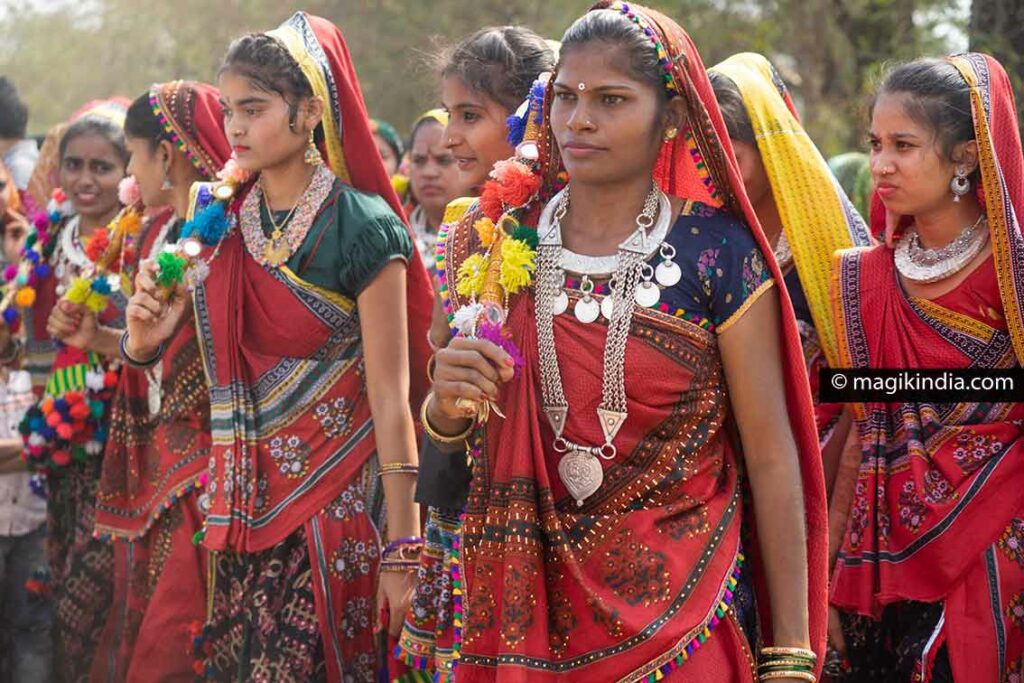
Then we are told to step aside. I take a seat on the terrace of a house opposite. The show can go on.
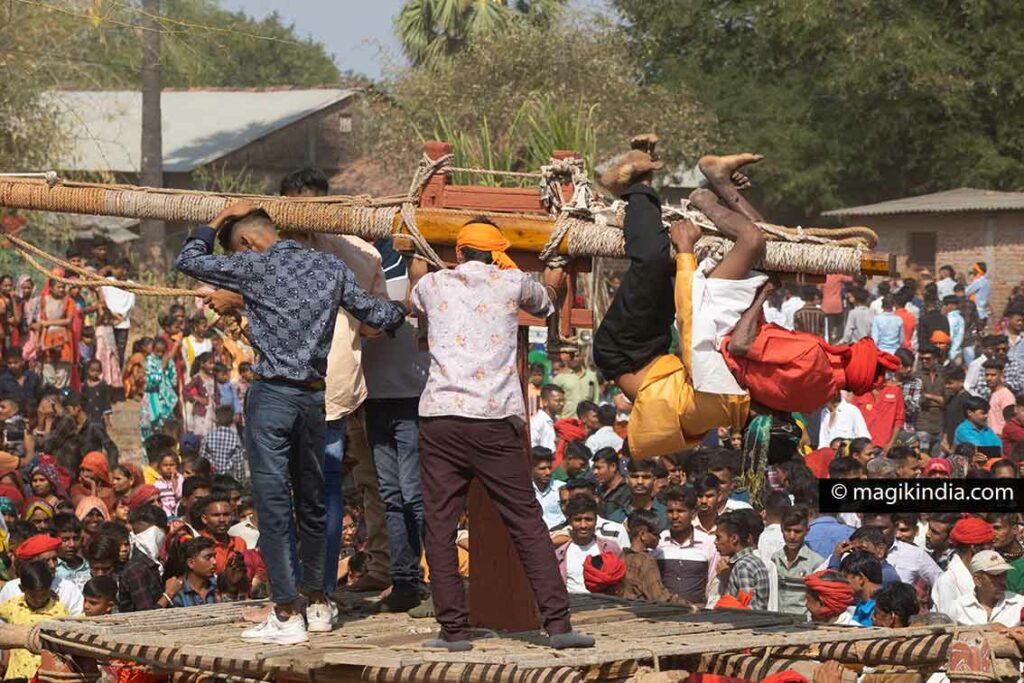
A dozen men climb on the platform of the machado, two position themselves on the rear part of the structure to act as a counterweight, the others on the central axis. A man, below, clings to a rope attached to the long arm of the merry-go-round. The men on the platform then activate the structure with the strength of their arms, which turns and turns again at breakneck speed. The man at the bottom ends up flying horizontally and he has to hold on, because this infernal machine is a wishing merry-go-round!
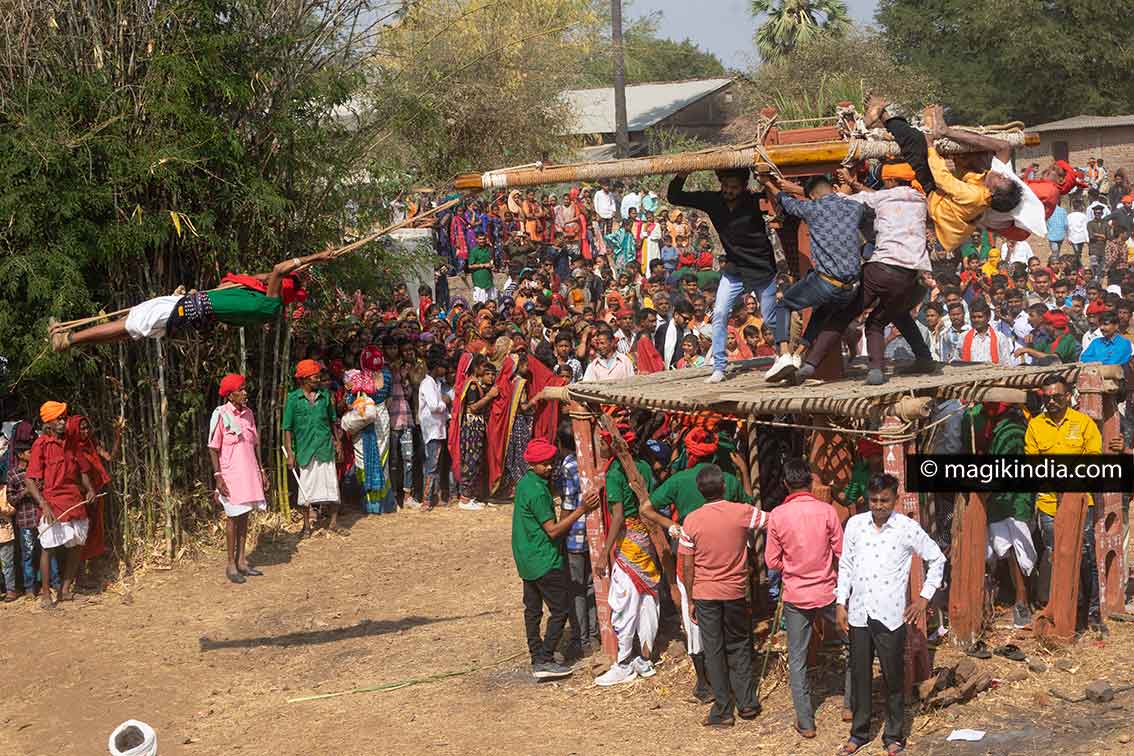
On the way back, when we think we had filled up on eccentricities, we see on the road an incredible-looking man: his body is painted with various circles of colours, his waist wears calabashes as well as a belt with bells and his head is topped with a long hat with peacock feathers whose base is reminiscent of a bird’s nest… What an encounter! This adivasi Rathwa culture is definitely fascinating!
These Ghairiyas or “peacock men” as I like to call them, who visit the houses of the villages during the Holi festivities for a few rupees, compel themselves to an asceticism, so that, there too, their wishes come true: they abstain from speaking, eating, drinking and even sitting for a whole day!

Holi ends, however, the spring Rathwa festivities are not over yet, the Kavant festival is approaching…
READ ABOUT THE KAVANT FESTIVAL
